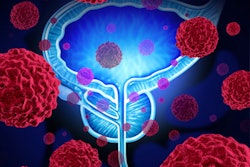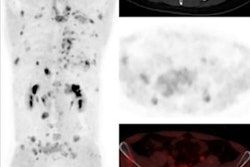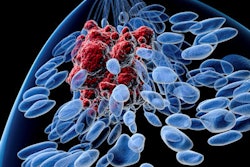
Prostate cancer occurs in transgender women even after gender-affirming surgery, according to a research letter published on 29 April in JAMA.
"Transgender women retain their prostate even after gender-affirming surgery, and thus remain at risk of prostate cancer," wrote a team led by Farnoosh Nik-Ahd of the University of California, San Francisco.
Because the incidence of prostate cancer among transgender women is unclear, Nik-Ahd's group conducted a study that included information from between January 2000 and November 2022 from 449 transgender patients with prostate cancer in the Veterans Affairs health system.
The investigators calculated the number of prostate cancer cases per year using an estimate framework from 2011 (the median year of study participants' transgender identity declaration in Veterans Affairs' [VA] records) and evaluated 11 years of follow-up (2011 to 2022). They tracked use of any gender-affirming hormone therapies, prostate-specific antigen (PSA) results and density (which measures the aggressiveness of the disease), biopsy grade, and clinical stage. Patients were also categorized into three categories based on estrogen use: never used, formerly used but stopped before being diagnosed with prostate cancer, or actively using.
Of the 449 transgender women, 155 (35%, or 14 cases per year) had prostate cancer; all of the cancers were identified on screening. Of these 155 individuals, 116 had never used estrogen, 17 had formerly used estrogen, and 22 were actively using estrogen.
Patient characteristics included the following:
- Median age was 61.
- Median PSA was 6.8 ng/mL.
- Median duration of estrogen use was 32 months among former and active estrogen users.
- 88% of patients were white.
- 43% were biopsy grade 1 (on a scale of 1 to 5, with 5 being most severe).
- 45% were clinical stage T1 (on a scale of T1 to T4, with T4 being most severe).
The highest biopsy grades were found in individuals who were actively using estrogen (35%) at time of prostate cancer diagnosis; of these, 29% were in grade group 5, the team reported.
The study showed that prostate cancer in this population "is not as rare as published case reports might suggest" -- although the rates were lower than the group expected "based on prior prostate cancer incidence estimates in cisgender male veterans," Nik-Ahd and colleagues wrote. The authors suggested that this lower rate of disease could be due to lack of prostate cancer risk awareness, the "suppressive effects of estrogen on prostate cancer development," or prostate cancers being overlooked in transgender women because of a misinterpretation of "normal" PSA levels among those receiving gender-affirming hormone therapies, they explained.
The study had its limitations, including being a case series without a comparison group and being restricted to the VA population, the authors conceded. They urged more research.
"Future work is needed to optimize prostate cancer detection strategies in transgender women," they concluded.



















